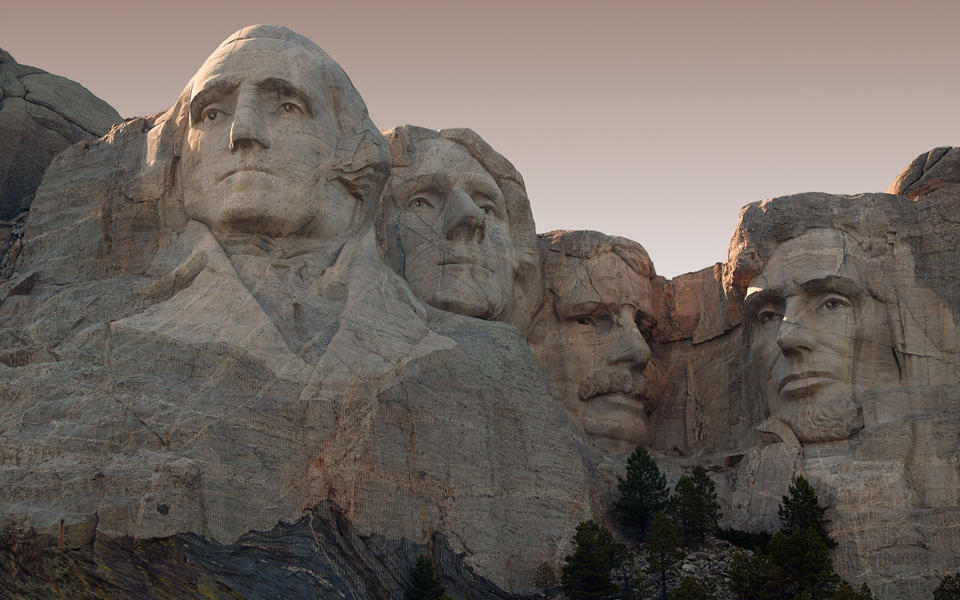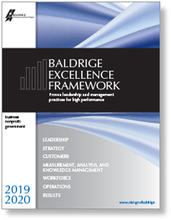Blogrige
The Official Baldrige Blog

What are the key attributes and behaviors for a role model, visionary leader? About six years ago, a task force of Baldrige community senior executives under the leadership of Kathy Herald-Marlowe was charged with drafting a set of senior leader attributes and behaviors consistent with the Baldrige Core Values, to be used by the Baldrige Foundation as criteria for a leadership award. Those leadership attributes and behaviors have been used subsequently as part of the learning discussions for the Baldrige Executive Fellows. Recently, I had the opportunity to update those attributes and behaviors based on revisions to the Baldrige Excellence Framework over the last several revision cycles. The revised attributes and behaviors are listed below for your consideration with your leadership team:
VISIONARY LEADERSHIP
- Leads the organization in setting and owning organizational vision and values
- Guides the creation of strategies, systems, and methods to ensure ongoing organizational success
- Inspires the organization and partners to achieve high performance
- Demonstrates authenticity, admitting to missteps and opportunities for improvement
SYSTEMS PERSPECTIVE
- Sets a systems perspective across the organization so that the organization and all its parts are viewed as a whole
- Causes holistic thinking and cross-functional synthesis, alignment, and integration
- Requires a focus on strategic direction and customers to improve overall performance
- Leads with recognition of the larger ecosystem (partners, suppliers, customers, communities) in which the organization operates
CUSTOMER FOCUSED EXCELLENCE
- Builds a customer-focused culture and integrates customer engagement and loyalty as a strategic concept
- Creates a focus on anticipating changing and emerging customer and market requirements
- Ensures differentiation from competitors through the development of innovative offerings and unique relationships
VALUING PEOPLE
- Builds and reinforces an organizational culture that focuses on meaningful work, engagement, accountability, development, and well-being of workforce members
- Creates an organizational environment that is safe, trusting, and cooperative
- Builds partnerships with internal and external people and stakeholder groups
- Builds a culture of inclusivity that capitalizes on the diversity of the workforce and partners
ORGANIZATIONAL LEARNING AND AGILITY
- Develops a capacity for rapid change and for flexibility in operations
- Leads and inspires the organization to manage risk and make transformational changes despite ever-shorter cycle times
- Creates an empowered workforce that effectively develops and uses evolving organizational knowledge
- Embeds learning in the way the organization operates
FOCUS ON SUCCESS
- Creates a focus on short- and longer-term factors that affect the organization and its future marketplace success, including needed core competencies and skills
- Accomplishes strategic succession planning for leaders and workforce
- Ensures that organizational planning anticipates future marketplace, economic, and technological influences
MANAGING FOR INNOVATION
- Builds an environment where strategic opportunities are identified, and the workforce is supported to take intelligent risks
- Fosters collaborative thinking among people who do not normally work together
MANAGEMENT BY FACT
- Compels the organization to measure performance both inside the organization and in its competitive environment
- Uses data and analysis in operational and strategic decision making.
- Challenges the organization to extract larger meaning from data and information
SOCIETAL CONTRIBUTIONS
- Acts as a role model for public responsibility and actions leading to societal well-being and benefit
- Motivates the organization to excel beyond minimal compliance with laws and regulations
- Drives environmental, social, and economic betterment of the community as a personal and organizational goal
ETHICS AND TRANSPARENCY
- Requires highly ethical behavior in all organizational activities and interactions
- Leads with transparency through open communication of clear and accurate information
- Builds trust in the organization and its leaders
DELIVERING VALUE AND RESULTS
- Leads the organization to achieve excellent performance results
- Defines and drives the organization to exceed stakeholder requirements and achieve value for all stakeholders
How does your leadership team perform relative to these attributes and behaviors? Do the members of the team complement each other's abilities, so that all the appropriate attributes are covered? Do your team members collaborate to make sure that employees, customers, and partners are treated fairly and with respect?
Have a discussion with your leadership team to identify collective strengths and opportunities for improvement. Your leadership team will be strengthened as a result and your people will benefit from the outcome!

Baldrige Excellence Framework
The Baldrige Excellence Framework has empowered organizations to accomplish their missions, improve results, and become more competitive. It includes the Criteria for Performance Excellence, core values and concepts, and guidelines for evaluating your processes and results.
Purchase your copy today!
Available versions: Business/Nonprofit, Education, and Health Care
About the author
Related Posts
Comments
Perhaps you may want to email this to some forefront CEOs..
The WSJ reports they had an epiphany (in 2019) that Milton Freidman's almost 50-year old "doctrine" (1970) misguided his, Jack Welch (1981), et. al. leadership behaviors, i.e., that the primary purpose of organizational leadership is to produce shareholder value.
Some examples could have been provided to understand these soft aspects of leadership role modelling.
Thanks for the comment! There are many good examples of role model leadership in the information about the Baldrige Award recipients on the Program's web site: https://www.nist.gov/baldrige/award-recipients






I have been checking above : "self-assessment";
Do you really think Leadership can be subject to assessment?
Yet worse, How "audacious" a pretentious can be the one who clicks this hyperlink, He might be a Leader, having the pattern, but it may look naive or simple-minded.
Joshua Levy